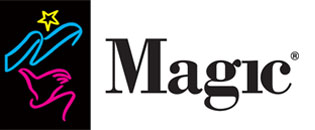Wallcovering Installation
WATER RESISTANCE & SURFACE PROTECTION
Pigment, solvent, latex and UV inks provide a high level of water resistance. Higher ink saturation can affect the water fast properties and show ink bleed in heavily saturated areas. Liquid lamination is recommended for DMIBOP because dirt and stains cannot be cleaned from the inkjet surface. GFIOP, SLEEK, and POSTERMAX do not need overprotection. Vinyl and polyester laminates are not recommended for wallcoverings. Excessive folding or creasing of the media may cause damage.
SURFACE PREPARATION
Walls should be prepped to a smooth, clean and dry surface prior to installation. Wallcoverings will not hide imperfections such as nails, holes or bumps. Failure to remove old wallcovering(s) may result in adhesion failure of the newly installed wallcovering.
Acrylic primer should be used on unpainted drywall. This will provide a sound surface for the wallcovering to adhere to. Apply primer over surfaces that have glossy paint for best results. ROMAN PRO-977 Ultra Prime Wallcovering Primer/Sealer is recommended and it can be purchased at most home improvement stores.
NONPASTED WALLCOVERINGS
PRO-880 Ultra Clear Premium Clear Strippable Wallcovering Adhesive and Golden Harvest GH-34 paste all provide good adhesion and allow for easier stripping in the removal process. Clay adhesives such as PRO-732 Extra Strength™ Clay Wallcovering Adhesive, PRO-774 Clay Strippable Wallcovering Adhesive can also be used. More aggressive adhesives such as ROMAN PRO-838 Heavy Duty Clear Wallcovering Adhesive should only be used for permanent applications.
The products listed above can be purchased at most home improvement stores. Apply a thin film of the adhesive using a 1/2” nap paint roller on the back of the paper. “Book” the wallpaper by folding the paste side on itself and make sure the side edges line up perfectly. Set the paper aside to allow the paste to soak in for 10 minutes.
PREPASTED WALLCOVERINGS (such as SLEEK)
Apply water on the back of each panel (strip) with a roller or submerse each panel in a wallpaper tray to activate the adhesive then “book” the wallpaper by folding the paste side on itself.
HANGING YOUR WALLCOVERINGS
Do not use tape on the imaged surface. Align top and adjoining edges. Smooth panels into place with a smoothing brush, starting at the center of the panel working toward the edges. Use a plastic smoother to push air pockets to the edges. The low wet expansion of these products allows double cutting at the seams.
BUTT SEAMS
Edges of the panels touch instead of overlapping. If the edges do not align perfectly at first, peel the wallcovering back and reposition. Use a roller to seal the seam. Reroll any seams that lift.
DOUBLE CUTTING
Overlap one panel of the wallcovering over the another so that the image or pattern is lined up. Use a straight edge and sharp blade to cut through the center of the overlapping wallcovering then peel away the cut strips. Smooth the wallcovering and wipe away any remaining adhesive.
CUTTING AROUND OBJECTS
Use caution when applying wallcoverings around switch plates. It is recommended to turn off the power source leading to the switch. Smooth the wallcovering over switch plates and then make diagonal cuts from the center to each corner. Press the wallcovering down around the edge of the switch plate, then lightly mark the outer edge of the plate and trim the excess. For round objects, such as light fixtures, cut a star shape into the wallcovering. Press the wallcovering down around the edge of the object, lightly mark the outer edge of the object and trim the excess.
REMOVING WALLCOVERINGS
Start at the top of the wallpaper and carefully separate a full-width strip about 8” down from the top away from the surface. If you are not able to separate the paper from the wall, apply water with a damp sponge to moisten the paper surface. Slowly pull the paper at the downward angle with both hands. Any excess adhesive can be removed with a damp sponge.



